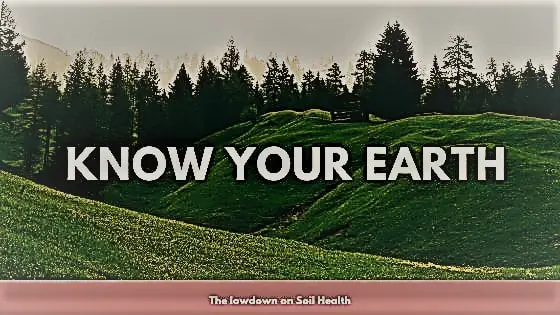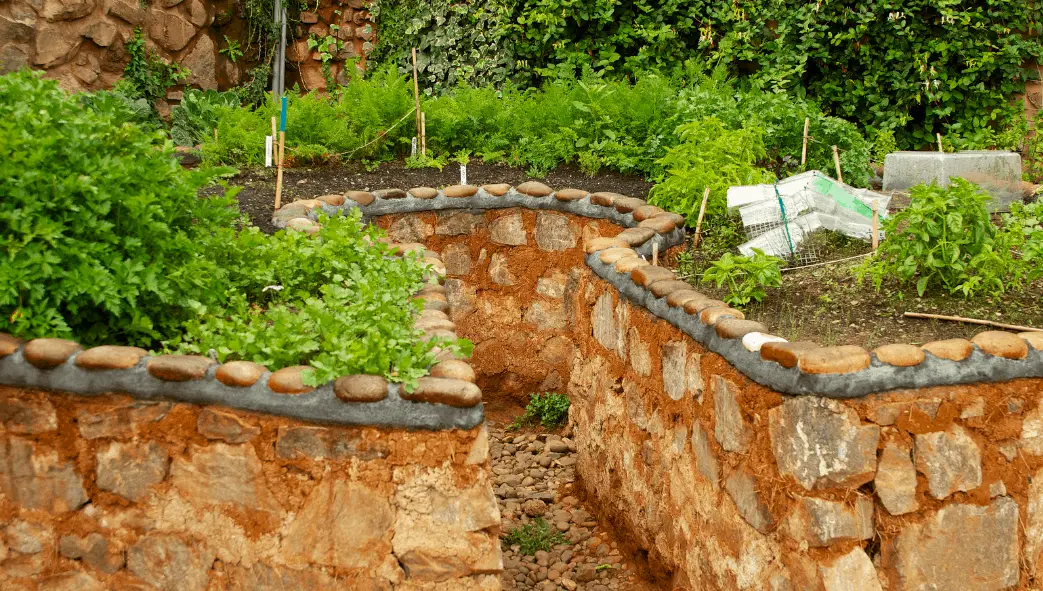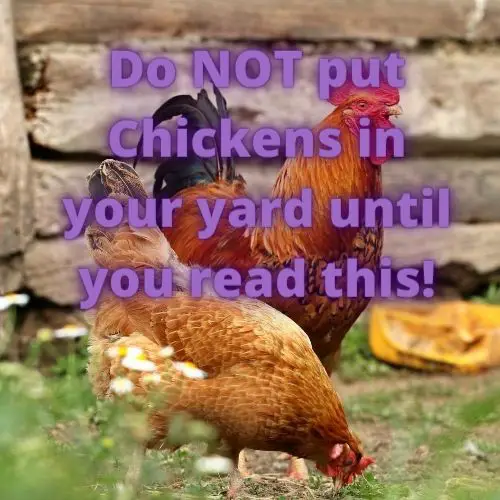When building a home, we must have solid foundations right! If not then our house won’t stand the test of time. The health of our soils is the foundation upon which we build our agriculture and our gardens. Without feeding the soil your foundations are at best unknown and at worst destined to failure.
There are more microbes in a teaspoon of soil than there are people on the earth and they need feeding to help maintain healthy soil. We have been told for years as gardeners and farmers by agrochemical companies to fertilize the plants to ensure we have optimal growth. But there is a growing body of evidence that what we see as a nutrient deficiency in the plant is merely a symptom of poor soil and by extension soil life that is not getting what it needs to survive. We need to change our perspective.
Microbes in the soil are directly tied to the nutrient recycling ability of that soil especially carbon, nitrogen, phosphorus, and sulfur. Healthy soils contain about 8 to 15 tons per acre of bacteria, fungi, protozoa, nematodes, earthworms, and arthropods. And they are hungry. But what do they do for the soil structure and why should we feed them?
What are the microorganisms in soil?


Bacteria are a major class of microorganisms that keep soils healthy and productive. Bacteria are similar in size to clay soil particles (<.2 µm) and silt soil particles (2-50 µm). They grow and live in thin water films around soil particles and near roots in an area called the rhizosphere. Bacteria’s small size enables them to grow and adapt more rapidly to changing environmental conditions than larger, more complex microorganisms. While bacteria may be small, they make up both the largest number and biomass (weight) of any soil microorganism.
Bacteria perform many important ecosystem services in the soil including improved soil structure and soil aggregation, recycling of soil nutrients, and water recycling. Soil bacteria form micro aggregates in the soil by binding soil particles together with their secretions. These micro aggregates are like the building blocks for improving soil structure. Improved soil structure increases water infiltration and increases water holding capacity of the soil (Ingham, 2009).
Microbes need regular supplies of active Soil Organic Matter (SOM) in the soil to survive in the soil. Long-term no-tilled soils have significantly greater levels of microbes, more active carbon, more SOM, and more stored carbon than conventionally tilled soils. A majority of the microbes in the soil exist under starvation conditions and thus they tend to be in a dormant state, especially in tilled soils or soils low in organic matter.
Fungus generally releases less carbon dioxide into the atmosphere and are more efficient at converting carbon to form new cells. The fungi generally capture more energy from the SOM as they decompose it, assimilating 40 to 55 percent of the carbon. Most fungi consume organic matter higher in cellulose and lignin, (think plant material such as wood, dead leaves, etc) which is slower and tougher to decompose.
The Actinomycetes are a type of Gram-positive bacteria. They can be terrestrial or aquatic. They are of great economic importance to humans because agriculture and forests depend on their contributions to soil systems. In soil, they behave much like fungi, helping to decompose the organic matter of dead organisms so the molecules can be taken up anew by plants. In this role the colonies often grow extensive mycelia, like fungi does, and the name of an important order of the phylum, Actinomycetales, reflects that they were long believed to be fungi. Some soil actinobacteria live symbiotically with the plants whose roots pervade the soil, fixing nitrogen for the plants in exchange for access to some of the plant’s saccharides or sugars.

Mycorrhizal fungi live in the soil on the surface of or within plant roots. These specialist fungi have a large surface area, somewhat like a web, and help in the transport of mineral nutrients and water to the plants. Fungi are not as hardy as bacteria, requiring a more constant source of food. Fungi population levels tend to decline with the cutting action of conventional tillage. Fungi have a higher carbon to nitrogen ratio (10:1 carbon to nitrogen or 10 percent nitrogen) but are more efficient at converting carbon into soil organic matter. With high C:N organic residues, bacteria and fungus take nitrogen out of the soil and lock it up within themselves.
Protozoa and nematodes consume other microbes. Protozoa can reproduce in six to eight hours while nematodes take from three days to three years with an average of 30 days to reproduce. After the protozoa and nematodes consume the bacteria or other microbes (which are high in nitrogen), they release nitrogen in the form of ammonium. Ammonium (NH4+) and nitrates (NO3-) are easily converted back and forth in the soil. Plants absorb ammonium and soil nitrates for food with the help of the fungi mycorrhizal network.
What do they do for soil structure?
Organic matter decomposition serves two functions for the microorganisms, providing energy for growth and suppling carbon for the formation of new cells. Soil organic matter (SOM) is composed of the “living” (microorganisms), the “dead” (fresh residues), and the “very dead” (humus) fractions. The “very dead” or humus is the long-term SOM that is thousands of years old and is resistant to decomposition.
Bacteria grow in many different microenvironments and specific niches in the soil. Bacteria populations expand rapidly and the bacteria are more competitive when easily digestible simple sugars are readily available around in the rhizosphere. Root exudates, dead plant debris, simple sugars, and complex polysaccharides are abundant in this region. About 10 to 30 percent of the soil microorganisms in the rhizosphere are actinomycetes, depending on environmental conditions (Sylvia et al., 2005).
Many bacteria produce a layer of polysaccharides or glycoproteins that coats the surface of soil particles. These substances play an important role in cementing sand, silt, and clay soil particles into stable microaggregates that improve soil structure. Bacteria live around the edges of soil mineral particles, especially clay and associated organic residues. Bacteria are important in producing polysaccharides that cement sand, silt and clay particles together to form microaggregates and improve soil structure (Hoorman, 2011). Bacteria do not move very far in the soil, so most movement is associated with water, growing roots or hitching a ride with other soil fauna like earthworms, ants, spiders, etc. (Lavelle & Spain, 2005).
Most soil fungi decompose organic residues high in cellulose and lignin. Fungi carbon use efficiency is about 40–55 percent so they store and recycle more C (10:1 C: N ratio) and less N (10 percent) in their cells than bacteria. While fungi are smaller in number, they equal or exceed the biomass of bacteria due to their greater size. Fungi are more specialized but need a constant food source and grow better in undisturbed soil conditions. Fungus and bacteria recycle soil nutrients and generally have a symbiotic relationship with most plants.
Having these microorganisms in our soil assists in a myriad of ways as we have seen. We have also seen that their presence is vital to the health of soil and plants alike. Our foundations are now understood – so how do we build with them?
How do we feed the microbes in our soil?
The simplest and most effective way to feed the microbes and other life within the soil is to add good quality compost to the soil. But there is far more that we can do.
Supercharging your soil by feeding the life that lives within is not something that will happen overnight but with care and attention you will begin the process quite quickly. With time your soil will be teaming with life and your garden will benefit as will the planet. So let’s get started.
Begin composting immediately – even without a lot of material or special composting bins you can achieve a lot. Below is just a few ideas to get you started but don’t feel you have to implement them all at once. Remember make the least change for the greatest effect.

- Build a worm hotel right in your garden bed. See the link here on how to do it.
- Compost insitu – either bury or compost right on top of where you intend to use the end result.
- Try blending your food scraps into a slurry and add them around the base of your plants.
- Use a broadfork or similar to open the soil (don’t turn it over just put some holes in to let the water and air into the soil)
- Stop tilling the soil – practice no-till gardening
- Try building your gardens using the lasagne (Ruth Stout) method.
- Use everything that is organic by putting it back into the ground – yes even the weeds.
- Add manures from horses, cows, sheep, rabbits, alpaca, goats, chickens even man’s best friend (after it’s been composted)
- Rockdust
- Green Manures are not really manure but a high nitrogen crop that is either turned back into the soil if you are tilling or simply chopped and left in place to return to the soil by decomposition if you are no-till.
- Wood Ash/PotAsh – Yes you can use wood ash in your garden but be careful and sparing with it. It is High in Potassium so keep it away from natives and blueberries. Otherwise it is a great way to add vitality to your acid soils and bring them back closer to neutral.
- Coffee Grounds – don’t mix these directly into the soil but rather feed them to your worms – they will process them and greatly appreciate the boost. Also good for repelling slugs, aphids, and ants around the garden.
- Seaweed – if you are lucky enough to live near the coast then get on out there and collect some of this nutrient rich microbe food. Just check that your state or municipality doesn’t have any rules or regulations around what you take.
- Straw – spent straw from animal shelters is usually rich in nutrients for the garden but even unused straw provides lignin and cellulose for the soil.
- Sugarcane Bagasse – Many gardeners have found the benefits of sugarcane bagasse – it has not seed load so no extra weeds to contend with and it is a great substitute for straw as both a mulch and in the compost bin.
- Mushroom Compost – this is delivering the feast of a livetime to the soil. There is so much great stuff happening in spent mushroom compost and if you have a mushroom farm nearby chances are you will get very cheaply or free.
- Fish is high in nitrogen and will really get your microbes humming. If you are lucky you might get some fish waste from a local seafood supplier or restuarant. Large quantities can be added to compost piles to really get them superheated. Don’t worry it doesn’t smell too bad.
- Human Urine – Yep you read that right. Very high in nitrogen, citrus particularly enjoy it – so send the boys out the back to pee on your lemon trees but also in the compost bin or diluted it with water in your watering can.
- Blood and Bone – now this can be made at home but seriously I wouldn’t recommend it. Just buy some to prime your beds before adding compost or mulch.
Making soils more healthy will make it possible to grow more food with fewer inputs, which will make gardening and farming more profitable and protect our environment. Its a win for the environment and for us. So go feed your soil.



